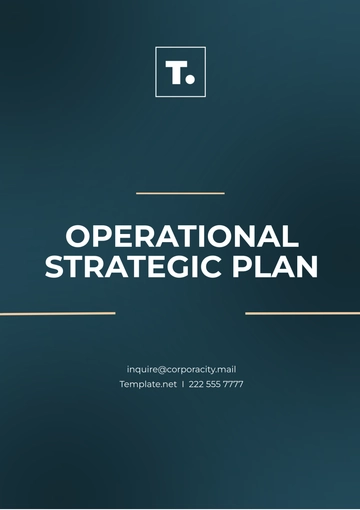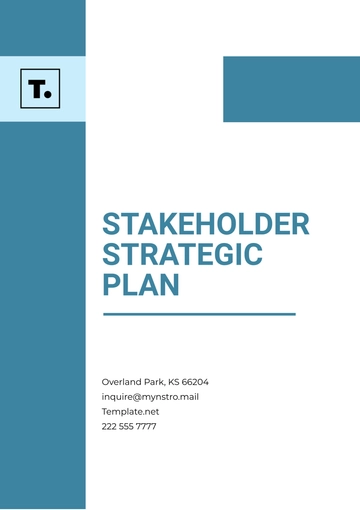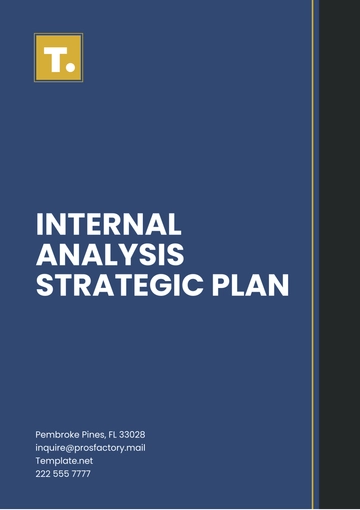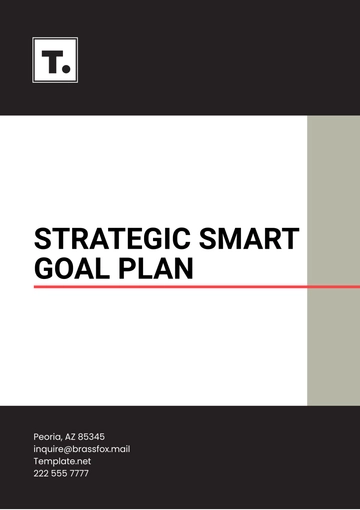Free Content Marketing Strategic Plan

Prepared by: [YOUR NAME]
Date: [DATE]
I. Introduction
In today's digital landscape, content marketing is a crucial component of a successful marketing strategy. This strategic plan outlines the approach for using content to engage audiences, drive traffic, and convert leads into customers. A well-executed content marketing strategy not only enhances brand visibility but also builds trust and authority in the industry.
II. Goals and Objectives
The primary goals of our content marketing strategic plan are:
Increase brand awareness and online visibility.
Engage and grow our target audience.
Generate quality leads for our products and services.
Boost customer retention and loyalty through value-driven content.
Establish the brand as a thought leader in the industry
Measurable Objectives
To achieve our goals, we have identified the following measurable objectives:
Achieve a 20% increase in website traffic within the next six months.
Generate at least 500 new leads per month through content efforts.
Attain a 15% engagement rate on social media platforms.
Achieve a 10% increase in email newsletter open rates.
III. Target Audience
Understanding our target audience is critical for crafting content that resonates and converts. We have segmented our audience into the following groups:
Demographics: Age, gender, education, and income level
Geographic location: Urban, suburban, and rural areas
Behavioral aspects: Online habits, purchasing behaviors, and brand interactions
Psychographic profiles: Interests, values, and lifestyle choices
Audience Persona
To better tailor our content, we will develop detailed audience personas that outline specific characteristics and needs of our target groups. This will help align content development with audience preferences.
IV. Content Strategy
Content Types
To engage our audience effectively, we will create a mix of the following content types:
Blog posts and articles
Infographics and visual content
Videos and webinars
Podcasts and audio content
Ebooks and whitepapers
Case studies and testimonials
Content Distribution Channels
It is essential to share our content across various channels to maximize reach and engagement. We will focus on:
Our company website and blog
Social media platforms (Facebook, Twitter, LinkedIn, Instagram)
Email newsletters
Third-party content distribution networks
Content Calendar
Developing a robust content calendar will help us plan and execute our content strategy effectively. The calendar will outline:
Content topics and themes
Publication dates and timelines
Assigned authors and stakeholders
Promotion and distribution activities
V. Performance Metrics and Analysis
To ensure the effectiveness of our content marketing strategy, we will monitor and analyze performance metrics regularly. Key performance indicators (KPIs) will include:
Website traffic and page views
Engagement metrics such as likes, shares, and comments
Conversion rates from leads to customers
Return on investment (ROI) of content marketing efforts
Data Analysis Tools
We will utilize industry-leading tools to analyze data and derive insights for optimizing our strategy. These tools include:
Google Analytics
Social media analytics platforms
Email marketing analytics tools
Customer relationship management (CRM) software
VI. Budget and Resources
Implementing a content marketing strategy requires a well-defined budget and allocation of resources. Key considerations include:
Content creation and production costs
Technology and subscription expenses for tools and software
Personnel costs for content creators and marketing professionals
Advertising and paid promotion budgets
Resource Allocation Table
Resource | Allocation (%) | Comments |
|---|---|---|
Content Creation | 40% | Includes writer and designer fees |
Technology and Tools | 20% | Software and analytic tools |
Personnel | 25% | Staffing for content and management |
Promotion | 15% | Paid media and advertising |
VII. Conclusion
A well-defined content marketing strategic plan is essential for achieving business objectives and fostering growth. By focusing on our target audience, crafting compelling content, and leveraging the appropriate channels, we will drive engagement and build a strong brand presence in the marketplace. Continuous monitoring of performance metrics will enable us to adjust the strategy and maximize its effectiveness over time.
- 100% Customizable, free editor
- Access 1 Million+ Templates, photo’s & graphics
- Download or share as a template
- Click and replace photos, graphics, text, backgrounds
- Resize, crop, AI write & more
- Access advanced editor





























